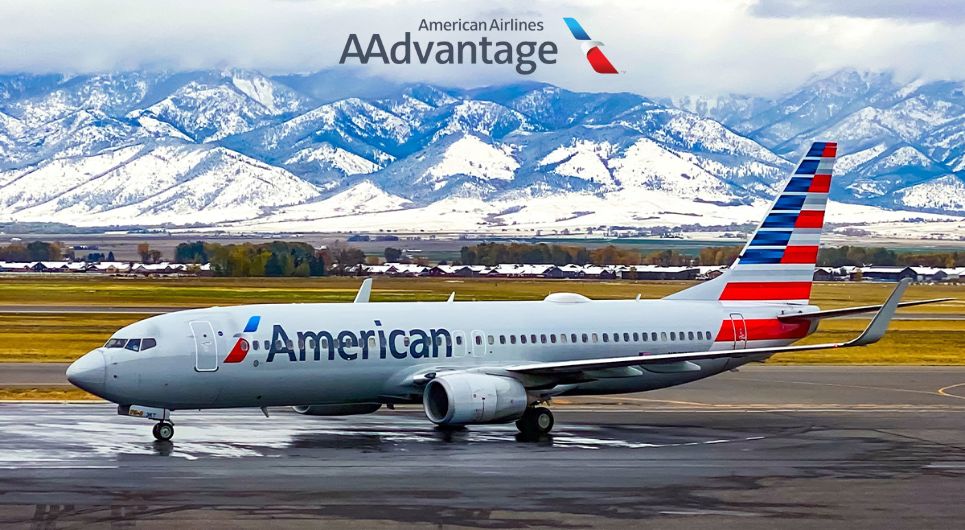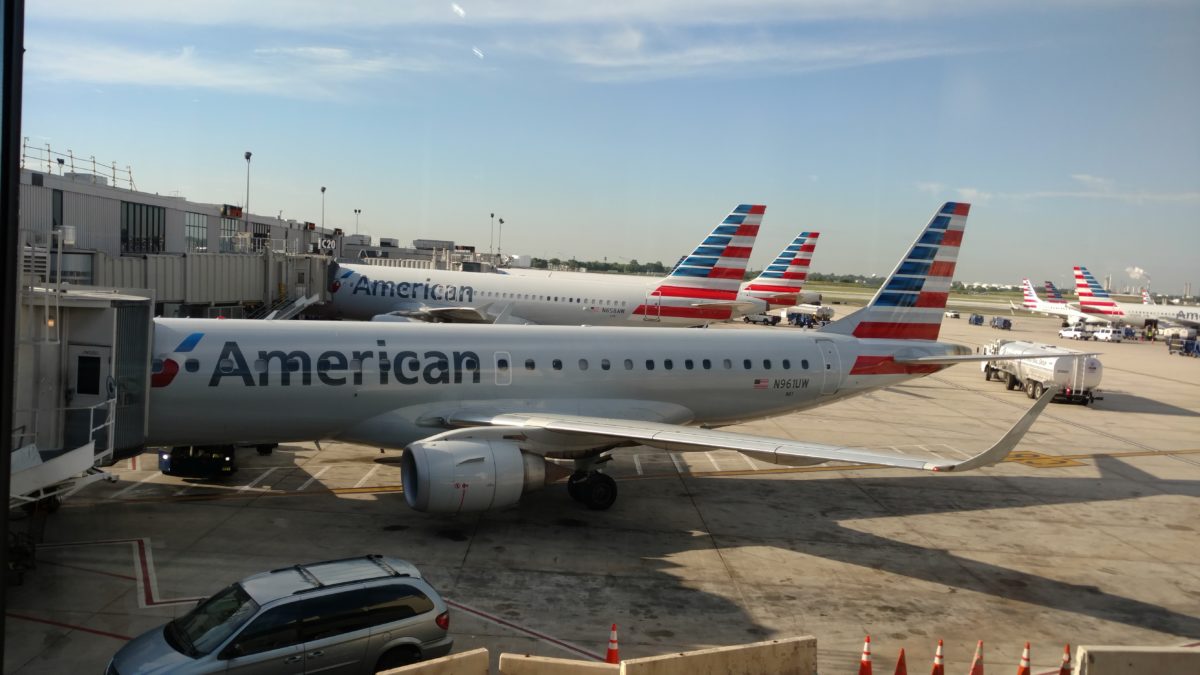At Frequent Miler, we keep a database of point valuations called “Reasonable Redemption Values.” These are estimates of the “worth” of airline miles, hotel points, transferable points, and more. The idea is that we try to identify the point at which it is “reasonable” to get that much value or more from your points.
This information is critical for making informed decisions. In fact, it’s a key component of the First Year Value information shown on our Best Credit Card Offers page, and it’s similarly used to show which cards offer the best value for everyday spend and which offer the best category bonuses.
When we first started looking at the value of airline miles, we used a laborious manual process to create estimates, but we now have a much better way of pinning down the value of American AAdvantage miles.
Points Path, which is a Google Flights extension, keeps records of both the point prices and cash prices of all searches done via its platform. Points Path founder and former Frequent Miler writer, Julian Kheel, has made this data available to us for the purpose of identifying rewards program point values.
Thanks to Julian and Points Path, we now have access to the results of over 5 million domestic and international American Airlines search results that show both the cash and award prices for the same flight (including partner flights). Using this data, we can provide a far better estimate of the “Reasonable Redemption Value” of AAdvantage Miles than we were ever able to obtain by using manual calculations.
Based on an analysis of Points Path’s data, we’ve concluded that the new Reasonable Redemption Value (RRV) for AAdvantage miles = 1.4 Cents Per Mile.

Points Path Data
Listed below is a summary of the raw data from Points Path. There are two values that are important to us. The median is the point that half of the observed results offered better point value and half offered worse value. We also have the average value of all the searches, in total and by booking class.
| Cabin | Median Value (cpp) | Average Value (cpp) | Number of data points |
|---|---|---|---|
| Economy | 1.20* | 1.51* | 5,081,345 |
| Premium Economy | 1.46 | 1.92 | 115,092 |
| Business | 1.30 | 1.84 | 672,201 |
| First | 1.19 | 1.57 | 150,085 |
| Combined | 1.19 | 1.56 | 6,018,723 |
Calculations
For our airline RRV values, we’re going to use the midpoints between the average value and the median. The reason is that the difference between the two is an indicator of how often more valuable sweet spots can be found in a given category.
If the median is 1 cent per point, that means that half of all searches produced a value of less than 1 cent per point, and the other half above 1 cent per point. However, if the same data showed an average of 2 cents per point it would mean that some of the 50% of searches that were above 1 cent per point were so far above that they doubled the result to 2 cents per point. Likely, that would indicate a higher prevalence of available sweet spot awards with outsized redemption value…something we like to see.
That’s indeed what happened with AA, as there’s a whopping 33% increase from the median to the mean (or average). That indicates that, even though only half of the searches Points Path tracked showed redemptions above 1.19 cents per mile, enough of those searches produced such outsized value that it raised the average redemption number significantly, to 1.56 cents per mile. To us, this means that there’s still ample opportunity for excellent value to be had when using AA miles.
- Points Path Median Observed Value for American AAdvantage redemptions: 1.19 cents per mile
(based on the past 365 days of data as of February 20, 2025) - Points Path Mean Observed Value for American AAdvantage redemptions: 1.56 Cents Per Mile
(based on the past 365 days of data as of February 20, 2025 - Range: 1.19 to 1.56.
- For our RRV, we’ll pick the middle point between 1.19 and 1.56 and then round it to one decimal, or 1.4 Cents Per Mile.
Conclusion
The exercise described above resulted in a slightly increased Reasonable Redemption Value (RRV) for AAdvantage miles, going from 1.3 cents per mile to 1.4 cents per mile. That’s the point at which most readers are likely to get that much value or more.
Please keep in mind that this does not mean that you will always get 1.4 cents per mile value from your AA miles. In practice, you’ll sometimes find better redemptions and sometimes you’ll find worse. However, we believe that 1.4 cents is a “reasonable” expectation for what your American miles are “worth” when used towards award flights.





I went on the AAadvantage site to redeem my miles toward a rental car for an upcoming Florida vacation. For 13K miles plus $324.59 I could get the Mustang convertible I wanted from either Alamo or Enterprise. However I could get the same vehicle directly from Enterprise with a 5 % discount with my Plus membership for $363.35
Doesn’t look like 10k miles equals $160 to me!
Any chance you can share domestic vs international Points Path CPP values like you have for Alaska and Aeroplan?
It’s hard to reconcile these RRVs with my real-world use case. I see points as a tool to get into The Front. J and F travel are too expensive to pay cash for, so I use points for J/F. Therefore I have a rule never to redeem points for Y travel. Add to that: though I often fly through a USA gateway city like ORD, PHL, CLT, NYC, nearly all my travel is longhaul, not to Europe. I use points only for competitively priced J/F seats from YYZ (or a US gateway like NYC, ORD, PHL, CLT) to wherever.
DL points are worth near-zero (not “slightly below AA”), because Delta offers no reasonable J/F redemptions from North America to anywhere.
AA points are very valuable because they actually sell something I want to buy.
UA points are worth a third less than AA points, because awards on UA’s program cost more.
Longhaul Business Class cash prices are irrelevant, since I would never pay them. Saying my AA points are “worth” $0.05 because the J fare to London is $6k is silly, because I would never pay that. I would pay $1,500 oneway for BA J to London but not more, which is why I need points. The fact that someone else, whom I don’t know, would pay $3k for that ticket doesn’t affect my valuation of my AA points.
My point, simply, is that the value of one’s points is entirely subjective. Greg would use them differently from me, partly because he has a different level of abundance than me. This is a big factor in valuation of points.
I know Nick and Greg (and presumably the FM whole team) don’t agree with my “philosophy” on this and I respect them highly as thought leaders in this field. I hope my input offers something to think about. Beware objectification of points values; it’s not objective, at all.
There’s a reason they’re called reasonable redemption values and not peak redemption values. RRVs are purposely conservative to reflect what the average user with little experience can expect.
@Ace
I fully understand the rationale behind RRV. You might think I’m a troll or an idiot who’s failed to understand. I’m not; I do understand.
It appears to me that the “average user” is:
resident of USA
nontrivial amount of domestic USA travel
willing to consider redeeming points for economy
Here are some assumptions which inevitably skew values for a user:
resident of a AA, UA or DL hub city
very high earn/balances
very low earn/balances
A user living in an AA hub city will experience the value of UA points very differently from a user in a UA hub city, no? A user with enough points for one J trip a year will (or should) value their points very differently from someone with abundant MR, ThankYou, UR, CapOne, Bilt points etc.
I know some will see my posts as snark or trolling but I beg you to believe I’m sincere and hoping to remind my fellows to do your homework before assuming RRV is close to your own valuation.
I didn’t think that you were trolling, but as you pointed out, there’s no one size fits all number that can possibly account for all scenarios, so the most conservative thing to do is to use some kind of objective average. Even the value that you can get from cash in everyday life will vary wildly depending on a whole range of circumstances. A gallon of gas is going to cost more in California than in Texas, so how much value are you going to assign to $1 of gas for the average American across the entire nation?
That’s my point. If I’m advising a consumer how much to pay for gas, I’d ask him a number of questions first, including those you’re suggesting. I wouldn’t give Texan advice to a Californian, no matter the size of his hat.
The whole point of RRVs is that they reflect the value that you can reasonably expect without asking any questions. From the RRVs page:
It’s like playing darts. The RRV is what you can expect from being able to hit the board, not what you can expect by hitting repeated bullseyes. Most people will never reach the stage of hitting bulleyes, even in this community.
AA has been my go-to for close-in bookings for quite some time, and I have reliably gotten over 2cpm. For me, it’s the most valuable airline currency by far. Closest runner up is Alaska, but that’s mostly because I can use those miles to fly AA.
I have the same experience. Starting with these prejudices: never redeem for Y, never fly domestic USA, all trips longhaul. I value AA points at least 50% higher than UA and perhaps 17x DL LOL. I’m AC hub captive with AC status and I still value AA points higher than AC.
This is an interesting analysis. As others have pointed out there are many other more lucrative uses for AA miles, on premium cabins and international travel. Recently I have been seeing many “web special” flights around 10k OW economy. Some of these routes can easily be 4cpm such as two I booked this year (ORD-EGE, ORD-LIR).
Great work Greg! Love this type of analysis.
One question on your methodology, once you found the lowest cash price airfare, did you just use the Award Points required for that specific flight or the best for all options (that met the criteria)? I seem to remember while looking at domestic Delta flights that the lowest points required for a given itinerary didn’t always align with the lowest cash price.
This only came up with AA. With Delta and United, the best cash rate that met my requirements was also the best points rate. With AA, I often picked different flights when picking the best mileage option vs the best cash option.
Correct me if I’m wrong here. (All of you first and biz flyers might not like to hear it this way.) I think based on your analysis and technique, the lower CPM value is actually showing the best opportunity to find good value on average. The RRV is actually useful for comparing value, not to just determine how much points are worth. RRV shows that as long as you are getting value at or above the RRV, you are getting good value. Currently, AA is showing the best opportunity to get good value (on average). For the domestic flyer, it is looking for good value, not just CPM or CPP. You basically hit on this in your summary, a higher CPM means the points are being traded for higher dollar amounts, but a lower CPM shows the average opportunity to find good value. Therefore, lower CPM is better.
No, I don’t see it that way. A low RRV means that the median CPM is low.
Love your work Greg, thanks! Would have loved for you to include Philly though.
Just proves that value varies so much depending on your usage. At the moment, AA has been the holding the most value for me with transcon biz readily available at 22k.
Worth a whole lot more if you live in/near an AA hub. Am still consistently getting .015 on points usage even with a drop in cash rates.
Certainly an interesting take on things. While your examples likely reflect normal usage for the general membership, I’d say that your readers are a lot less likely to use AA miles for low value redemptions like you illustrate here. For example I know that I use American miles for premium cabin flights on partners to Asia. Europe in business class on AA metal can also provide good value if you can find saver space. I’d love to see a comparison of the major award programs that list business class space from Chicago to Bangkok or Los Angeles to Paris. I imagine the redemption values would skyrocket.
Another consideration is that airfares are often much higher in secondary or tertiary cities, which would raise the value proposition for awards. Reduced award rates for having an AA credit card would also make miles worth more.
We are in an alternative universe now (and in the future too?) where AA miles are worth less than the worthless DL miles.
Also interesting that the SW and JB approach seems to be more honest – 1.3-1.4 c value
Also useful to know that Chase UR are now worth no more than 1.3c and the pay yourself back is the best value redemption
I have given up completely miles and focus on cash back – The BofA premium rewards with Platinum honors gives 2.625c – that is better than any mile today – and you can always buy miles on sale when needed
I used to think of a mile as lost cash of 2c based on the Citi card, but now when looked at as 2.5c, only the bonus categories make even minor sense.
I also now focus on cash back, especially since the world shut down. I don’t think I’ll go back though, even if the world opens up.
It does make me consider the relative value of a point vs. cash back. With the exception of SUBs which bring in multiple points per cent, is cash not a better way to go? Hmmmmm….
(Edit: some bonus spending might also be better than CB)
My estimate for Delta is very close to yours, but my searches for AA always provide better value than 1.0 cpp. I rarely see anything less than 1.4 cpp. I primarily search from a regional airport (MDT), which may have something to do with it.
@ Greg — I appreciate you being willing to lower the “advertised” value of your sponsored credit card offers. Many other bloggers probably wouldn’t be willing to do that.
The results of your analysis are definitely surprising. I was certain that AA was the most valuable of AA, DL and UA, but I also generally look at business/first class domestic redemptions. Even with EXP status, we dread coach so much that we are willing to just pay for first. I could be wrong, but it does seem that first/business redemptions on AA have gotten significantly less expensive since COIVD. Given the decline in business travel, I guess that would be expected.